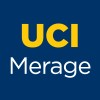
Latent Pulmonary Hypertension (PH) in Chronic Thromboembolic Pulmonary Hypertension (CTEPH )After...
Pulmonary HypertensionChronic Thromboembolic Pulmonary HypertensionSevere CTEPH leads to an impaired physical capacity and a restricted quality of life and poor prognosis. Pulmonary endarterectomy represents the best choice as therapy, when the thrombi are located in the central pulmonary vessels and therefore can be operated. By this operation the pulmonary artery pressure can be normalised and the patients' survival improved. Up to now, after successful endarterectomy patients only receive anticoagulation. Despite operation many patients remain symptomatic and are restricted in their physical capacity. Therefore a hypothesis of this project is that most of the patients, even after successful operation, show peripheral vascular remodelling with a ventilation-perfusion mismatch and elevated pulmonary pressure during exercise. In this study we aim to analyse how many patients with CTEPH after endarterectomy show elevated pulmonary artery pressures at rest or during exercise and are limited in their physical capacity, hemodynamics, oxygen uptake and quality of life and need further therapy. Another aim is to examine whether exercise and respiratory therapy may improve the patients postoperatively. Therefore 30 patients with CTEPH > six months after endarterectomy, with ongoing restricted exercise capacity shall be included. After baseline examination in the University hospital Heidelberg the patients receive exercise and respiratory therapy for three weeks. The patients will receive further examinations at the end of rehabilitation after 3 weeks and after 15 weeks. All examinations include medical history, family history, physical examination, ECG and echocardiography at rest and during exercise, cardiopulmonary exercise testing, assessment of the respiratory muscle strength, the SF-36 questionnaire for quality of life, laboratory testing and MRI. Rehabilitation will be conducted in the clinic for rehabilitation Koenigstuhl, Heidelberg. Participants will be randomised into two groups, a control group receiving a conventional therapy for three weeks, in which physical exertion is to be avoided and a training group with additional exercise and respiratory therapy.

Reconstruction of the Carotid Bifurcation in Patients With Arterial Hypertension of 2-3 Degrees...
HypertensionCarotid Stenosis1 moreCarotid endarterectomy (CEA) is a well-established procedure for preventing ischemic brain damage. Stenosis of the precerebral vessels are often combined with arterial hypertension. In recent decades, many works have appeared that indicate that the course of arterial hypertension (AH) changes after CEA. However, it remains unknown how this is related to the choice of surgical tactics.

Sympathetic Regulation of Large Artery Stiffness in Humans With ISH
HypertensionSystolic2 moreStiffening of your blood vessels, particularly the large vessels from your heart (called the aorta and carotids) you age contributes to the development of cardiovascular disease (CVD) such as heart attack and stroke. Nerve activity from your brain to your body also increases with advancing age but it is unknown if this nerve activity contributes directly to the stiffening on your blood vessels in older adults in addition to high blood pressure. Therefore, successful completion of the proposed aims will have a significant clinical impact by identifying if nerve activity from your brain could be a novel target for therapies that would lower stiffness of the aorta and carotid arteries in older adults.

Remote Patient Monitoring and Health Coaching vs. Usual Care for the Treatment of Hypertension
HypertensionHigh blood pressure, also known as hypertension, affects nearly half of all Americans and increases the risk for heart disease and stroke. Only about half of people with high blood pressure have it under control. New methods to control blood pressure are needed to reduce heart attack and stroke rates. The purpose of this study is to test whether a digital program that includes personalized health coaching and remote patient monitoring with a connected blood pressure cuff, all delivered on a smartphone or website, can improve blood pressure control compared with usual care among patients with high blood pressure.

Dietary Sodium Intake and Blood Pressure in Living Kidney Donors
HypertensionLiving Kidney Donor1 moreThis is a pilot study to determine the feasibility of the study design and examine the main outcome whether low dietary sodium intake is superior to high dietary sodium intake in controlling blood pressure to be within the normotensive range in living kidney donors.

REstrictive Versus LIberal Oxygen Strategy and Its Effect on Pulmonary Hypertension After Out-of-hospital...
HypertensionPulmonary Arterial5 moreBackground: For patients with out-of-hospital cardiac arrest (OHCA) at the intensive care unit (ICU), oxygen therapy plays an important role in post resuscitation care. During hospitalisation, a lot of these patients occur with pulmonary arterial hypertension (PAH). Currently a wide oxygen target is recommended but no evidence regarding optimal treatment targets to minimise the prevalence of PAH exists. Methods: The RELIEPH trial is a substudy within the BOX (Blood pressure and OXygenation targets in post resuscitation care) trial. It is a single-center, parallel-group randomised controlled clinical trial. 300 patients with OHCA hospitalised at the ICU are allocated to one of the two oxygenation interventions, either a restrictive- (9-10 kPa) or liberal (13-14 kPa) oxygen target both within the recommended range. The primary outcome is the fraction of time with pulmonary hypertension (mPAP >25 mmHg) out of total time with mechanical ventilation. Secondary outcomes are: length of ICU stay among survivors, lactate clearance, right ventricular failure, 30 days mortality and plasma brain natriuretic peptide (BNP) level 48 hours from randomisation. Discussion: This study hypothesises that a liberal target of oxygen reduces the time with PAH during mechanical ventilation compared to a restrictive oxygen target in patients with OHCA at the ICU. When completed, this study hopes to provide new knowledge regarding which oxygen target is beneficial for this group of patients.

MR Antagonist and LSD1
HypertensionMineralocorticoid ExcessLysine specific demethylase-1 (LSD1) is an epigenetic regulator of gene transcription involved in the pathophysiology of elevated blood pressure and likely renal damage in Blacks. This project investigates whether a genetically driven anti-hypertensive approach proves superior in controlling blood pressure and mitigating renal injury in Blacks who carry the risk allele for LSD1 (rs587168). The findings of these investigations may lead to a new approach in treating a subset (~30%) of the essential hypertension population (Black LSD1 risk allele hypertensives).

Skills-Based Educational Strategies for Reduction of Vascular Events in Orange County
HypertensionThe Skills-Based Educational strategies for Reduction of Vascular Events in Orange County, CA (SERVE OC) study aims to evaluate the efficacy of a culturally tailored, skills-based, cardiovascular health (CVH) intervention amongst a cohort of Latinx and Vietnamese families in Santa Ana, CA. The SERVE OC intervention was adapted from our previous work, the Discharge Educational Strategies for Reduction of Vascular Events (DESERVE) intervention, for the primordial prevention of hypertension (HTN) and other risk factors for cardiovascular disease (CVD). (The DESERVE study was conducted at New York University under their IRB). The intervention will be delivered by community health workers (CHWs) and will focus on: 1) optimizing risk perception, 2) enhancing provider-family communication, and 3) identifying challenges to CVH. Participants will receive multi-lingual materials and access to an app/web portal to identify healthy goals and strategies around modifiable risk factors for CVH, Life's Essential 8. SERVE OC will follow participants for 36-months to examine changes in CVH using Life's Simple 7 (LS7): smoking status, physical activity, weight, diet, blood glucose, cholesterol, and blood pressure (BP) scores and changes in systolic blood pressure (SBP) among adult participants versus enhanced standard intervention (ESI). Remote blood pressure (BP) monitoring will also be used to assess BP over time. CHWs will engage families in identifying barriers to CVH and solutions to share with community stakeholders. Using this community-based research (CBPR) approach the investigators hope to improve health equity within the community through enhanced social capital, empowerment, and advocacy capacity. This study is part of a multi-center projected coordinated by the UCLA-UCI Center for Eliminating Cardio-Metabolic Disparities in Multi-Ethnic Populations (UC END-DISPARITIES), aimed at improving CVH among underserved populations in Los Angeles and Orange County.

Staying Healthy After Childbirth: My Hypertension Education and Reaching Target Program for Postpartum...
HypertensionA study of Staying Healthy After Childbirth (STAC) and My Hypertension Education And Reaching Target (MyHEART) for postpartum (p) patients to determine if health coaching can increase 12-month postpartum care attendance, hypertension control and hypertension self-management behavior compared to usual clinical care in patients with chronic hypertension or persistent pregnancy associated hypertension - postpartum. 140 participants will be enrolled and can expect to be on study for 12 months.

Effect of TOTUM-854 on Blood Pressure in Subjects With Moderately Elevated Blood Pressure
PrehypertensionElevated Blood Pressure2 moreThis clinical study aims to assess the efficacy of TOTUM-854, a mix of 6 plant extracts, consumed twice a day on automated office blood pressure in subjects with moderately elevated blood pressure. The hypothesis is that TOTUM-854 is superior to placebo for decrease of automated office blood pressure after 12 weeks of consumption.
